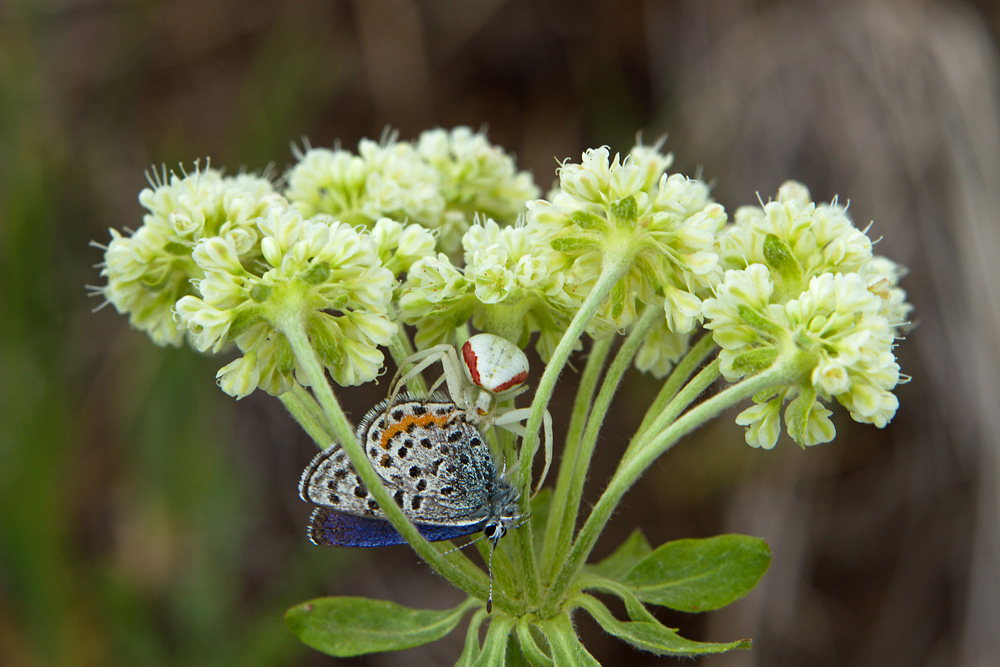
When we think of Predators in the Rocky Mountains we think Grizzlies and Wolves. This Crab Spider is every bit a predator as it sucks the lifeblood from this Royal Blue butterfly. Unlike most spiders, this is an ambush predator not relying on a web to ensnare prey. The ability to change color makes this tiny killer most effective. So when sunrise is over, and Bears and Bison are nowhere to be found get creative. Close-up or Macro photography is a great way to make the most of your precious time afield. Macro is defined as 1:1, or life size and can be achieved in a number of ways.
1) A true macro lens.
2) Reversing your lens by means of a mount that threads to the front of your lens, allowing the lens to be mounted backwards on the camera.
3) An extension tube between your lens and camera body.
4) Or a diopter.
Macro lens are wonderful but can be expensive for someone that shoots macro occasionally. They perform best at high magnifications and provide amazing results. Reversing your (non macro) lens allows for magnifications that exceed 1:1 and can be amazing when you are shooting details that are 4 or 5 times life size. This requires a reversing mount and can be had cheaply. Diopters are a magnifying filter that threads on the front of your lens and requires you to shoot through additional glass. I have used all of the above but my ‘go to’ solution are Extension tubes. They are lightweight (no glass) , cheap and provide excellent results with lenses you already own. Simply remove your lens from the body and place the tube between the two. Extension tubes come in different lengths, generally 12mm, 25mm and 30mm, and can be stacked. The greater the distance between the camera body and the lens, the greater the magnification And if you use them with a zoom lens you can vary the magnification and the working distance by zooming in or out. That is a real advantage when working with mobile subjects. Remember, the higher the image magnification, the less depth of field you have (area of focus from near to far). Think apertures of f11 to f16, which often means slower shutter speeds, so a tripod is helpful and allows for thoughtful composition and critical focus. This image was shot with a 70-200 mm zoom and a 25mm extension tube @ f11 giving me about 1:4 life size. Even at f11 you see depth of field is shallow, and is measured in fractions of an inch, so focus carefully. So next time you’re out with camera in hand, be careful where you step. You might just crush the best picture of the day!